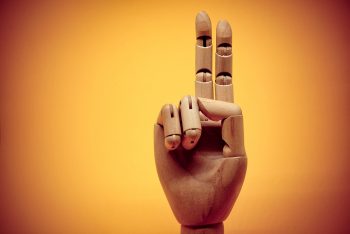How to use the Dual form الْمُثَنَّى in Arabic? Part two Posted by yasmine on Jan 30, 2019 in Arabic Language, Grammar
Going back to talking about the Dual, in this post we’ll be focusing on applying the dual form to adjectives and verbs.
- Let’s first look at adjectives: A dual noun is modified by a dual adjective. For example:
“two Iraqi (male) students” is طالبان عراقيان
“two Iraqi (female) students” is طالبتان عراقيتان
Remember: Any noun that is dual will have dual agreement for the gender of that noun.
How would you say “two short men” and “two tall women”?
(Please feel free to leave your answer in the comments!) ?
- Verbs: Let’s use the verb كَتَبَ (past) and يَكْتُب (present) for our examples.
Remember in part one, we looked at the only two pronouns that take the dual form (أنْتُما and هُما). There are actually 3 different verb endings for these dual pronouns:
أنْتُما (you two – both masculine and feminine)
.أنتُما كَتَبْتُما You (two) wrote.
.أنتُما تَكْتُبان You (two) are writing.
هُما (they two – masculine)
.هُما كَتَبا They (two) wrote.
.هُما يَكْتُبانِ They (two) are writing.
Even though the dual for “they” is هُما for both genders, the verb endings are different.
هُما (they two – feminine)
.هُما كَتَبَتا They (two) wrote.
.هُما تَكْتُبانِ They (two) are writing.
So, pretend you saw two women eating lunch at a café, how would you describe that?
(Please feel free to leave your answer in the comments!) ?
- What about things that come in pairs like hands, feet, ears, eyes, etc.? We use the dual too!
Hands: يدان Feet: رِجلان Ears: أُذنان Eyes: عينان
There is still more to the dual form and its applications, but here, I wanted to give you a basic understanding of how the dual works with nouns, pronouns, adjectives, and verbs. Let me know if you have any questions!

Build vocabulary, practice pronunciation, and more with Transparent Language Online. Available anytime, anywhere, on any device.




